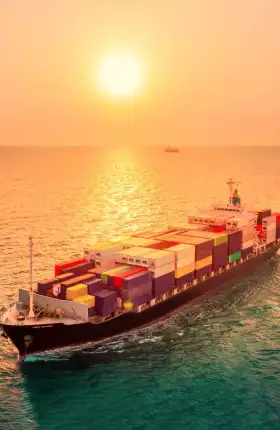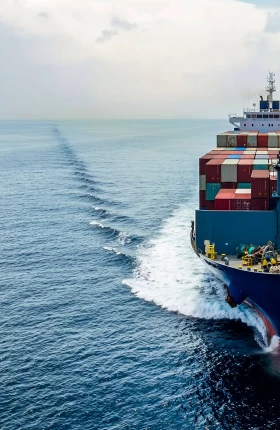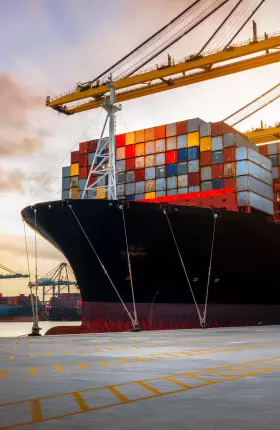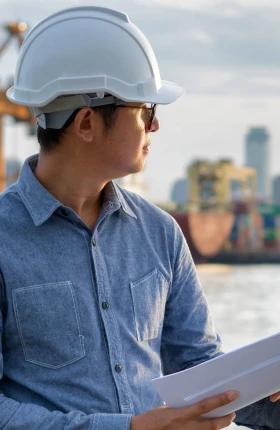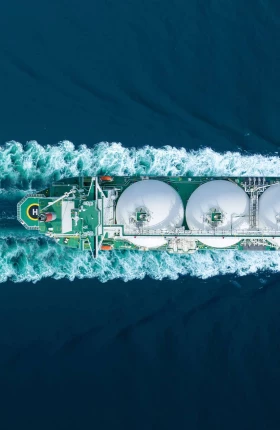Heavy industries are heavy emitters, but they are also critical to the global economy. Decarbonizing shipping, logistics, and construction is a mighty challenge that will require bold leadership, sustained cooperation, and continuing regulatory support. Peter Jameson, a managing director and partner in BCG’s Copenhagen office, frames the problem in both pragmatic and overarching ways.
In the global effort to reduce greenhouse gas emissions, heavy industries present a core challenge. We are as reliant as ever on high-emitting sectors like shipping, logistics, and construction for the functioning of our economies, but they are notoriously difficult to decarbonize. What makes these sectors so challenging to abate? They are by nature fragmented, reliant on the complex interaction of an array of companies and service providers, and organized along regional lines.
We know the answers are not simple—we would be further along in our goals if they were. But we can and must make progress. It will take concerted and sustained efforts and cooperation from governments and industry, bold leadership willing to step into the unknown, and significant changes in consumer behavior and expectations, to move the needle.
Two Ways of Looking at the Challenge
There is no single silver bullet that will get us over the line. And the solutions we do find must be as economically sustainable as they are environmentally so. In my work with clients in heavy industries, I encourage them to look at the challenge from both practical and inspirational angles. Pragmatically, disaggregating the overarching challenge into discrete but connected smaller problems makes the task more tangible. And there is no question that the accumulation of targeted actions and adaptive behaviors can lead to real change. In some cases, incremental progress is the only available way forward.
But it will take more to achieve the degree of change our planet needs. So in addition to incremental improvements, we need to reimagine from the ground up how we get products—and people—from one place to another; how we develop and build our cityscapes to make them more sustainable. And it is difficult to tackle these fundamental issues without a clear and overarching narrative to inspire and motivate stakeholders across the spectrum. People naturally need a north star, a goal they can buy into that helps them persist through difficulties. It is the role of leaders in industry and government to speak to both of these important perspectives.
How to Begin Decarbonizing Supply Chains
Supply chains represent a particular challenge—and opportunity—for decarbonization. By their nature, these complex systems rely on the cooperation and coordination of many stakeholders. This interconnectedness makes decarbonization particularly daunting, but also holds a clue to solving the problem. The only way to overcome fragmentation is to double down on the mechanisms for collaboration, and to develop forums in which the many stakeholders can hash out and brainstorm ways to reduce emissions.
The Mærsk Mc-Kinney Møller Center for Zero Carbon Shipping is an example where stakeholders—ports, logistics providers, shipping companies, cargo owners—gather to both problem solve and reimagine maritime shipping from the ground up. The shipping industry began its decarbonizing agenda—by default—with a scattershot approach; small and largely unconnected initiatives. Through collaboration, this more disparate approach has been coalescing around bigger themes and projects, and toward the development of solutions and as a voice calling for regulatory engagement. Initiatives coming out of this collaboration include orders for ships that can run on new fuels, the retrofitting of ports, changes in procurement, and, overall, buy-in from leaders, who are investing both strategic bandwidth and real funds into the challenge.
Levelling the Global Playing Field
The work required to transition to a green economy will demand significant investment, and the key to attracting sustainable investments is clarity and transparency. Without thorough risk analysis investors will be hesitant. They will simply calculate the cost of the decision versus the willingness to pay. This is a gap that needs bridging. Part of that bridge will come from leveling the regulatory playing field.
The EU has taken a major step with new rules when it comes to decarbonization, and on how companies must report on it. However, regional policies can only go so far in a global industry. Leaders in the Nordics, and in Europe more broadly, must boldly take center stage to show those in other parts of the world it is possible to “green” their sectors in economically sustainable ways. The importance of inspiration should not be overlooked.
There are those on the front lines of the battle to reduce emissions to a sustainable level, and there are those taking a more passive approach. But I am encouraged by the level of commitment from colleagues and peers at every level of industry and government. This leadership is critical, particularly in a context in which progress can seem, at times, elusive.




